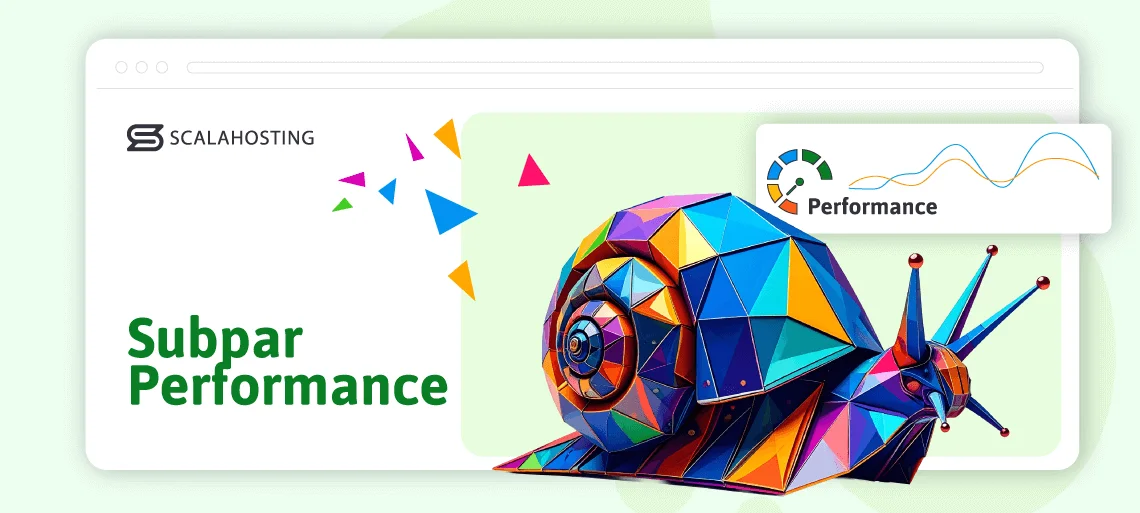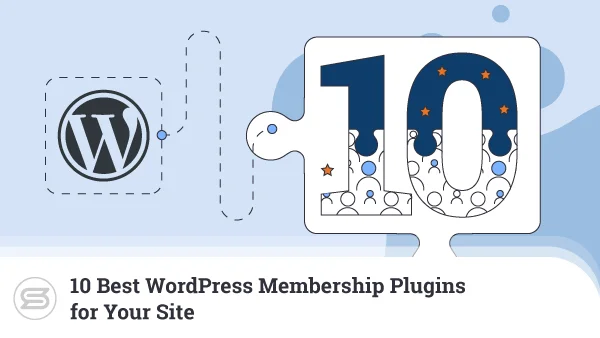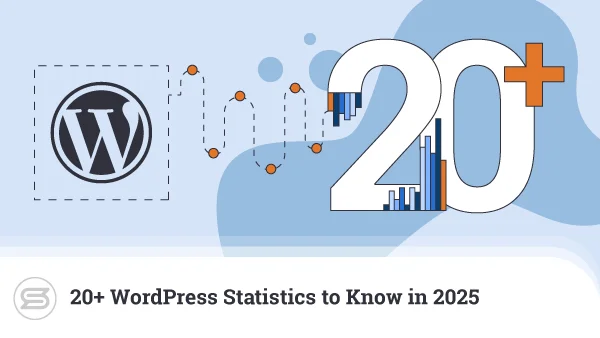When to Switch Your WordPress Web Hosting
We know that WordPress powers over 40% of all websites on the internet. Given how vast the online world is, it’s tricky to accurately estimate how this translates into actual figures, but we can safely say that there are hundreds of millions of WP projects out there.
In light of this, you’d think you’ll have no problems finding a hosting solution that suits your new WordPress project. How great it would be for them to help you grow your new website in an environment that gives it the security, reliability, and performance you’d expect.
Of course, the reality is a little different.
Every day, WordPress users from all over the world struggle with various hosting-related issues. The problems can be incredibly frustrating, and hosts don’t always have the capacity (or desire) to fix them.
Moving a website from one hosting service to another could be tricky, but sometimes, it’s the only option. Today, we’ll show you when you should consider it.
Is your WordPress site slow, unstable, or stuck on a host that can’t keep up?
Migrate to ScalaHosting’s Managed WordPress VPS – faster speeds, rock-solid uptime, and 24/7 expert support included.
Hosting a WordPress Website: How Hard Can It Be?
WordPress is not exactly brand new, so it seems illogical that hosts still struggle to provide the high-quality service you expect.
As always, however, it’s not as straightforward as you think.
Creating a hosting service is more complex than switching on a server and installing some software. Its performance and reliability depend heavily on the type and age of the host’s hardware. The data center and underlying infrastructure also play a key role.
It’s not just about the physical machines, either.
Every server, whether shared, virtual, or dedicated, has numerous software systems that must be configured properly to provide website owners with the best possible environment. There’s no step-by-step guide to setting them up, and no two configurations are identical.
Individual hosts take different approaches to tackling various problems, so when building a hosting infrastructure, sysadmins rely heavily on their experience to set up systems the way they think is best. However, there’s no guarantee they will always get it right.
On top of all that, there are other factors, like the host’s responsiveness and reaction times during emergencies.
In other words, creating a good hosting service is anything but straightforward.
This, however, doesn’t concern you all that much. What you need to know are the signs that a particular hosting service isn’t suitable for you.
So, let’s see them.
Subpar Performance

Speed is usually the first thing hosts brag about when they try to win you over. This is no surprise.
A slow website is far from a minor inconvenience.
You can invest thousands in creating the best-looking website with all the functionality you’ll ever need, and visitors still wouldn’t be impressed if it takes ages to load. Even Google gets annoyed when the performance is suboptimal.
Search engines prefer to fill the top of their results pages with websites people will actually like. The overall user experience is a major ranking factor, and poor loading speeds are bound to affect your position.
In other words, a slow website would hamper you in two ways. On the one hand, it will drag you down the search engine results pages, reducing your chances of getting a hit. And when a visitor does land on one of your pages, you’ll have a harder time convincing them to stay because everything is taking way too long to load.
Of course, figuring out what may be holding your site back is essential. Poor loading speeds could be caused by a faulty theme or plugin, and they can sometimes be fixed by implementing a few optimization techniques.
However, they can often be attributed to a poorly configured server or hosting service, as well. If that’s the case, it’s time to look for a new host.
At ScalaHosting, we have taken all possible precautions to ensure our servers offer the speed and responsiveness you and your site’s visitors expect. When setting up your new account, you can deploy it in one of 13 state-of-the-art data centers, keeping your site close to your target audience, minimizing latency, and improving performance. In addition to this, there’s out-of-the-box support for technologies like the LiteSpeed and OpenLiteSpeed web servers, which could have a significant effect on your site’s loading speeds, especially if you use them alongside the LiteSpeed Cache WordPress plugin.
Frequent Downtime
Your website doesn’t have working hours, lunch breaks, or holidays. It has to be available 24 hours a day, 7 days a week, 365 days a year.
What happens if it doesn’t?
The exact implications depend on the nature of your project, but it’s safe to say it can never be good for your business.
Obviously, the financial costs are what most website owners think of first when the error messages pop up, especially if they’re building an ecommerce site. The more popular the online store, the more serious the damage, but even if you’re not selling products or services, unplanned outages can disrupt your ad revenues and any other potential sources of income.
However, frequent downtime can have long-term implications that span well beyond the financial aspect.
First and foremost, it damages your site’s reputation. If you try to visit a website and it returns an error message, you’re unlikely to try to return to it ever again. If you do and see that it’s down again, you’ll completely lose trust in the business and the people behind it.
Search engines won’t be impressed, either. Their bots scan your website constantly, and if they get error messages too often, they’ll drag it down the results pages, replacing it with a more reliable site.
There are other, less obvious problems. The increased number of complaints about the frequent outages will put additional pressure on your customer support department, frustrating both website visitors and employees. You may incur penalties or issue refunds in some cases, and if your site is a part of some sort of mission-critical operation, the damage could be particularly severe.
But how much downtime is too much?
It’s important to distinguish between planned and unplanned outages. Occasional service interruptions caused by updates and other maintenance jobs shouldn’t be too much of a problem as long as the host manages to keep them to a minimum.
Many hosting providers know this and advertise a money-back guarantee program, offering some of your money back if they don’t reach a predetermined uptime benchmark.
It’s safe to say that if you feel you’re eligible for a refund, it’s probably time to find a new host.
Like every reputable provider, ScalaHosting has taken every precaution to ensure your site stays online for as long as possible. Every single system is monitored around the clock, and we use automated platforms that alert our sysadmins to potential problems before customers notice them.
Our cloud infrastructure also helps us avoid prolonged outages. Our VPS services run on top of a cluster of servers connected to a network. If one of the physical machines goes down, the rest can take up the slack. Our customers’ accounts can be quickly redeployed across the cluster, minimizing downtime even in the event of a serious hardware failure.
Lack of Upgrade Options
When you’re setting off, one of your priorities would be to find a web hosting solution that doesn’t break the bank. In other words, you’ll most likely deploy your site on a cheap plan with limited power.
As your site starts to outgrow your initial account, your host will probably let you pick between several upgrade options. However, they aren’t always as flexible as you would like.
For example, you may be forced to choose a plan that is just too powerful. The upgrade will give you the performance you’re after, but also hit your budget hard. Furthermore, such a plan comes with plenty of resources you probably won’t use, at least for the time being, so it won’t be very cost-effective.
Your host must be able to efficiently facilitate your site’s growth, no matter how quickly (or slowly) traffic levels swell. If the upgrade options are limited or lack flexibility, it’s probably best to look for another host.
You won’t have such problems with ScalaHosting.
Over the years, we’ve lifted thousands of WordPress projects off the ground. This has helped us understand the optimal infrastructure and configure our servers to provide the best possible hosting environment for any WordPress website.
All that experience has also taught us what WordPress users want.
When they’re just starting out, they need a budget-friendly hosting solution that acts as a launchpad for developing their site. If they’re building a simple, no-frills WordPress project, they can even use a shared plan at first.
As the traffic grows and they continue to add new features and plugins, they need a more solid foundation to step on. In other words, they need a virtual private server, which offers more reliable performance thanks to its guaranteed resources.
In addition to faster and more consistent loading speeds, a VPS is characterized by unmatched scalability. A virtual private server’s hardware configuration is easily customizable, and changing it rarely requires more than a reboot, especially if the infrastructure has been set up correctly.
At ScalaHosting, we take this flexibility to the next level. Our customers’ virtual servers are deployed on a state-of-the-art cloud infrastructure built and maintained by our experienced sysadmins. This means our customers can tap into a pretty much unlimited pool of resources. Our cloud has allowed us to create unique managed cluster hosting solutions suitable for anything from global online businesses to mission-critical projects.
Another advantage of the cloud-based virtual server is the fully customizable hardware configuration. ScalaHosting’s VPS solutions aren’t confined to packages. Instead, you can specify the exact number of CPU cores, the memory, and the storage space.
When you need more processing power, you can simply add a CPU core without touching the RAM or storage. This means you can eliminate performance bottlenecks without having resources you won’t necessarily use.


Slow and Unreliable Customer Support
Some website owners don’t consider customer support to be important. They think they can handle all the challenges of building and running a website on their own, but they usually realize how wrong they are pretty quickly.
Your host’s technical support agents shouldn’t be confined to sending you a tutorial link when you’re wondering how to install a plugin. Indeed, they have to communicate with clients and help out whenever issues arise, but they’re also responsible for monitoring the servers’ health, reacting when something’s wrong, implementing damage mitigation actions in the event of a cyberattack, and a host of other jobs that set a high-quality host apart.
Speed and efficiency are crucial. Support staff must be available 24/7 to answer customers’ questions, fix potential problems, and optimize the service’s performance and reliability.
So, how do we do it at ScalaHosting?
Our customer care and technical support experts are available around the clock. Within 30 seconds of reaching out over live chat, they will be listening to your case. And if you need to post a ticket regarding a more complex inquiry, you can expect a reply in less than 15 minutes.
In addition to the industry-leading response times, you can expect quick, efficient resolutions to all hosting-related issues from a team of highly-trained professionals with decades of experience in the industry.
In an era dominated by AI and chatbots, we like to keep things human, so you can always expect real people answering your queries.
Lack of Features and Hosting Environment Limitations
It’s a good idea to determine the features you expect from your hosting account before you even start. The list will differ for every person and project, and some might struggle to decide what they need.
A good strategy would be to see what different hosting providers offer and separate the features into three categories:
- Features critical for your project’s successful launch, development, and everyday operation.
Try devising a plan detailing the steps you’ll need to take during each development stage. This will help you determine the project’s exact requirements and the tools you can’t do without. The features in this category could range from something as trivial as FTP access to support for various technologies you want to implement.
- Features you can live without, but would make your life a lot easier if they’re present.
Some of you are probably technically savvy enough to set up WordPress manually. Yet, given the choice, most would still prefer to use an automatic installer like Softaculous. Plenty of other tools, while not critical, could save you a lot of time and hassle. Make sure you don’t underestimate their importance.
- Features that make no impact on your work.
If your project doesn’t require you to customize your hosting environment in any way, you probably won’t notice if root access is available. While this and many other features may be vital for some projects, they most likely won’t influence how you build and launch your site.
When looking for a web hosting service, ensure all the features in the first category and most in the second group are available.
That’s just one thing to keep in mind, though.
Hosts have policies and limitations governing how website owners utilize the service. These limitations usually revolve around things like the number of email/FTP accounts you can create, the bandwidth, the number of inodes, etc.
Be sure to review all the terms and figure out whether they meet your needs. If they don’t, it may be time to look for another hosting provider.
At ScalaHosting, we’re determined to ensure that even the cheapest shared plan offers reliable service and consistent loading speeds. To do this, we must ensure the shared server’s hardware resources are evenly spread among users.
Our experience allows us to do it without imposing too strict limitations. All but our cheapest plans let you host multiple websites under the same account, and you don’t have any limits on bandwidth, emails, or databases. Even the number of inodes isn’t restricted.
If you move up to our VPS services, you have even more freedom. The virtual server is under your control, so you can decide how to use its resources.
Speaking of our VPS packages, they come with SPanel, a comprehensive server management platform built and developed by ScalaHosting. Ever since we started working on it, we’ve relied heavily on customer feedback to determine what functionality to include in our proprietary control panel.
Using a dedicated feature request platform, our R&D department can determine what users want and, based on that information, steer SPanel in the right direction.
Hidden Fees

Web hosting is a competitive market, and for many website owners, price is the deciding factor when looking for a new hosting service. Because of this, hosts often try to emphasize the affordability of their plans.
Unfortunately, in doing so, certain additional fees are left out or written in print that is a touch too small. Sometimes, this is done intentionally, and sometimes, it’s not. In both cases, it leads to an unpleasant surprise and doesn’t speak well of the provider.
How can you avoid the hidden fees?
Well, a word-for-word examination of each host’s terms of service can help you dodge the unexpected costs. However, we all know that more often than not, we’re talking about long documents full of legalese and written in annoyingly small print.
A more bearable alternative would be to go through online reviews and see what people think of the different providers. Blindly trusting every word you read is probably not the best strategy, but if the provider regularly engages in some sort of dodgy practices, this is bound to crop up on review sites like Trustpilot and G2.
If you check out ScalaHosting’s reviews on these two platforms, you’ll notice that the overwhelming majority of opinions are positive. This is partly because we put a lot of effort into ensuring we’re as transparent as possible with our customers. All prices are clearly stated on our website, and reading our terms of service doesn’t require a law degree.
We’ve been in the industry long enough to know that anything else will frustrate our customers, and frustrated customers don’t really do much for any business. That’s why we have a unique anytime money-back guarantee, according to which you can get a refund for any paid-for but unused service.
Hardware and Software Reliability
Setting up a reliable and quick hosting service is not a set-and-forget job. Its performance depends on a number of factors, meaning maintenance and upgrades play a major role in delivering the quality you’re hoping for.
Proactive optimization is critical, especially in light of the competitive market and relentless innovation. For example, a modern NVMe SSD storage device is much faster than a traditional solid-state drive and worlds away from the old and unreliable HDDs. Your host must know that, and it should take the necessary precautions to ensure you have access to the technology.
It’s not just about the hardware, either.
Before installing WordPress, you need an OS, a database management system, a web server, and a ton of other software components.
Your provider’s technicians must set this all up and configure it to provide the best possible hosting environment for a WordPress website. Then comes the question of maintenance, optimization, installing updates…
This is the only way to ensure you get access to the latest security patches and performance optimization tweaks.
At ScalaHosting, we take our hardware very seriously. All our plans are powered by modern servers deployed and maintained in state-of-the-art data centers. The cloud infrastructure we’ve built allows us to periodically upgrade our hardware without any service disruption.
In addition, our technical experts keep a finger on the pulse and are aware of all the technological advancements in the world of system administration. They constantly tweak the servers’ configuration to squeeze the maximum performance, and security patches are applied as soon as they’re released to ensure your site is well protected.
Conclusion
Without a high-quality hosting service, you’ll struggle to develop your WordPress website, implement the functionality you want, and position it in a favorable spot on the search engine results pages.
Sometimes, even if a hosting provider looks suitable at first, it eventually starts hampering your progress. It’s essential to correctly identify the exact moment when it’s time to switch.
FAQ
Q: Do I need additional hosting for WordPress?
A: The version of WordPress you download from https://wordpress.org/ is self-hosted, meaning you need a hosting account to install and host your website. You can start with a cheap shared plan, but as soon as you add some functionality and attract some traffic, you’ll need to upgrade to a VPS.
Q: Is it easy to change my WordPress hosting provider?
A: Moving your WordPress website from one host to another means copying your site’s files and uploading them to a new server, recreating the database and importing the information inside it, and configuring WordPress to work in the new environment. If you switch to ScalaHosting, our technicians will take care of everything for you, leaving you to point your domain to the new server.
Q: Which hosting is best for WordPress?
A: As long as you’re building a simple site with limited traffic and a few lightweight add-ons, you can host it on a shared hosting plan. However, if you’re a bit more ambitious about your project, a VPS will give you better performance, security, and consistent loading speeds.


